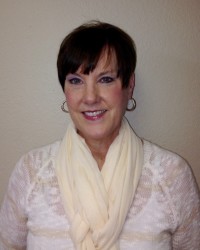Bone up on the Health of Your Bones
The month of May is nearly upon us, and all across the nation, Osteoporosis Prevention Month will be recognized. Osteoporosis is often called the “silent disease,” because bone loss occurs without symptoms. The first sign may be a fracture due to weakened bones. A sudden strain or bump can break a bone.
Osteoporosis is a major health threat for estimated 44 million (55%) of people 50 years and older, and an additional 34 million have low bone mass, placing them at risk. Approximately 10 million people are estimated to have the disease. But hold on, there’s more! One in 2 women and one in 4 men over 50 will have an osteoporosis-related fracture.
Both men and women need enough calcium to build maximum bone mass during their early years. Bones are living organs. Calcium is deposited and withdrawn from bones daily. By the age of 22, 90% of bone mass has been developed, and the body still adds bone mass to about the age of 30. It is important to build up a healthy bone “account” while young and continue to make deposits with age. Take the following risk assessment to see if you are at risk of developing osteoporosis:
Do you:
– Eat or drink less than 2 milk products servings daily?
– Smoke cigarettes or drink alcoholic beverages?
– Exercise less than 30 or more minutes daily?
– Have a family history of the disease?
– Starve as “thin is in?”
Are you:
– Female?
– Small boned?
– Aging?
– Drinking more than 1 or 2 caffeine-containing drinks daily?
If you answered ‘yes’, then you are at risk. It isn’t uncommon for women to get a bit shorter as they age. If shrinkage happens gradually over three or four decades, there’s no need to worry, but if you suddenly lose an inch and a half in height, you should be concerned. It could be due to a vertebral fracture and can indicate osteoporosis.
The good news is that osteoporosis is preventable for most people. Remember to start building healthy bones while young. Healthy food choices and lifestyle are important for BOTH men and women. Attaining adequate calcium and Vitamin D are essential for strong bones. The major source is the dairy food group. Other calcium-containing foods include canned fish (sardines with the bones), deep leafy greens, and calcium fortified juice. Sources of Vitamin D are fortified milk, some fortified grains/cereals, cold saltwater fish (salmon, halibut, herring, tuna, oysters, shrimp), some calcium and vitamin/mineral supplements, and the sun. Vitamin D is manufactured in your skin following direct exposure to sun. The amount varies with tie of day, season, and skin pigmentation. Ten to fifteen minutes exposure o hands, arms and face 2 to 3 times per week may be sufficient. Clothing, sunscreen, window glass and pollution reduce amount the produced.
Three to four 8-ounce servings of low-fat dairy everyday will provide the calcium and Vitamin D needed. If you are lactose-intolerant, eat hard cheese, yogurt, canned salmon, broccoli, and legumes. You can also try fortified foods, such as orange juice. If you don’t get enough calcium in your diet, your doctor may suggest taking supplements that have 1,000 to 1,500 milligrams of the nutrient.
Another important factor in strengthening bones is weight-bearing exercise. Even simple activities such as stair climbing, walking, and dancing can strengthen bones. Harvard researchers found that premenopausal women who have more visceral (belly) fat also had decreased bone mineral density. One theory explains that overweight people are more prone to vitamin D deficiency, since the fat-soluble vitamin can get trapped in fat tissue. Other research has shown that people with high levels of fat in their liver, muscles, and blood have more fat in their bone marrow, which can up the risk of fracture. Studies have found that while contracting slightly is natural, people who stayed active shrank less than those who were sedentary or stopped exercising in middle age.
There are some things to avoid: smoking, alcohol, more than 1 or two caffeinated drinks, and being too thin. My mother always said that aging is not for the faint of heart, so we need to take care of our bones. Talk to your doctor about your bone health. Being post-menopausal and certain medications can affect bone health. Bone density screenings can detect bone loss.
Remember that osteoporosis is a serious, debilitating disease, is affected by onset of menopause, is mostly preventable and treatable, and affects 8 million women in the USA. Fight back, live well, live strong, and live long!
Upcoming Event Reminders
– Twogether in Texas Marriage Education workshop: Saturday, May 12, 8:30 a.m., Texas A&M AgriLife Extension Office, 1200 W. Houston, Sulphur Springs. Engaged couples who complete the workshop will be given a certificate to save $60 upon applying for a marriage license. Call 903-885-3443 to sign up. No cost. Lunch and refreshment provided.
– “Whipped” Challenge: Saturday, June 16, 9:30 check-in, Hopkins County Civic Center grounds. Limited to the first 8 teams (4 people per team). Deadline to submit registration is May 31. $40 per team. Call 903-885-3443 or go to http://hopkins.agrilife.org for registration and rules of play (click on ‘publications’)
Closing Thought
Time is free, but it is priceless. You can’t keep it, but you can spend it Once you’ve lost it, you can never get it back. Use it wisely!

Johanna Hicks
Texas A&M AgriLife Extension
Family & Consumer Sciences
1200-B W. Houston
P.O.Box 518
Sulphur springs, TX 75483
903-885-3443 – phone
903-439-4909 – Fax
[email protected]





